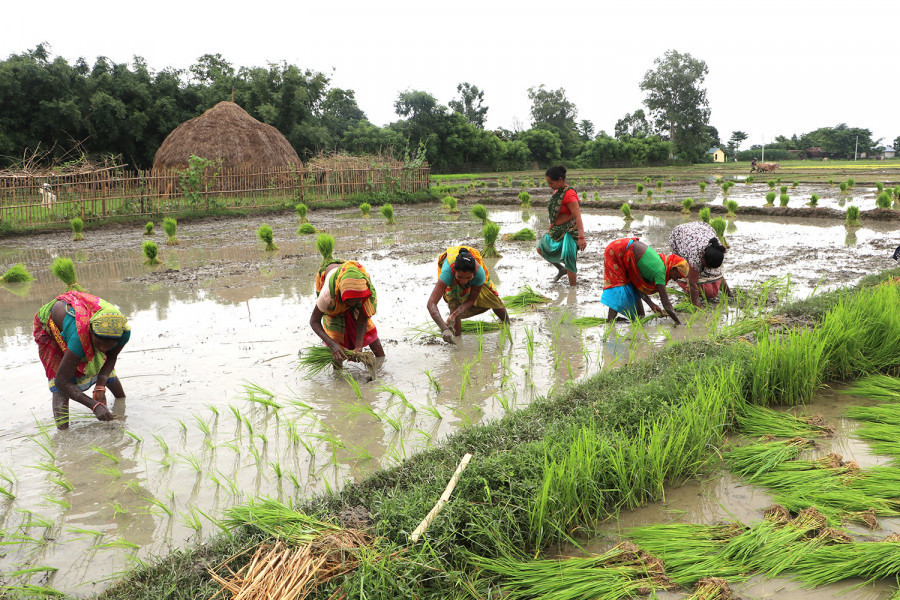Editorial
Who moved my rice?
Rice keeps the country together. Let’s come together to help farmers grow more rice.
The paddy planting season is back again, and it is the most important season of the year for a reason. With a paddy acreage of 1.5 million hectares, resulting in a harvest of over 5 million tonnes of rice, and per capita consumption of about 120 kilos of milled rice per year, Nepalis have for the longest time maintained rice as their principal good grain. Rice contributes around 20 percent of the agricultural gross domestic product, over 50 percent of the total cereal food production, and almost a third of the total calorie intake for Nepalis. The gastronomical significance rice holds for Nepalis cannot be exaggerated. Rice keeps the country together, so to speak.
Farmers across the country have started to harvest maize and other crops in their fields to make space for planting paddy in time. The monsoon has arrived pretty much on time this year, leaving the farmers hopeful that their most important crop is going to yield aplenty. But all is not well with the business of paddy planting as the country that unites around rice-eating has long neglected the constraints facing paddy farmers.
It all begins with the lethargy on the part of the government. Institutions mandated with timely procurement of much-needed chemical fertilisers almost always remain non-performing entities, leaving the farmers with little option but to purchase fertilisers at exorbitant prices or make do without them altogether. But the unavailability of fertilisers is hardly the sole problem facing paddy farmers in the country.
Growing paddy, as with other sub-fields of agriculture, has been hit hard by the ‘development’ bug that has stung Nepalis of late. The eagerness to build roads overnight, often without proper engineering and budget, has meant that newly built roads crisscross irrigation channels and agricultural fields. Moreover, lack of coordination between state institutions causes delays, or at times permanent neglect, in rebuilding the irrigation channels and agricultural fields destroyed thus. As a result, vast expanses of fields end up turning barren each year.
Vast swathes of land traditionally used for growing paddy are increasingly shrinking due to rapid urbanisation. Hectares after hectares of arable lands continue to be turned into housing colonies even as government agencies look away. High-rise apartment buildings are emerging in paddy fields as builders lure or coax farmers into letting go of their lands in exchange for money. As a result, what used to be green-golden rice fields have now turned into ugly concrete jungles. Conservative estimates put the loss of paddy land to urbanisation in the past decade at around 100,000 hectares.
The cost of mechanisation in agriculture, in a country like Nepal which has an exceedingly low per capita income, is pretty high. This, in addition to the rising labour costs owing to the lack of farm labourers as people increasingly move to urban areas and abroad in search of work. The high cost, thus, becomes restrictive for those farmers who wish to modernise their farming practices and boost their productivity.
The result: Nepal has slipped from the highest rice yield in South Asia in the 1960s to the lowest today. The loss is ours, as a country that loves its rice. With little support from the government, farmers are often left with the only choice of leaving paddy cultivation altogether and moving on to other professions. It is high time governments of all levels worked together to help paddy regain its lost significance. Or the rhetorical greeting “Bhaat khanu bhayo?” will lose its significance altogether in the long run.




 17.12°C Kathmandu
17.12°C Kathmandu












%20(1).jpg&w=300&height=200)

